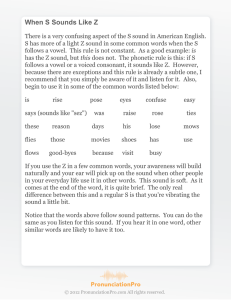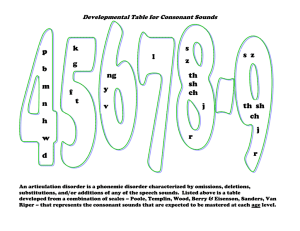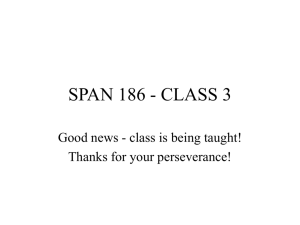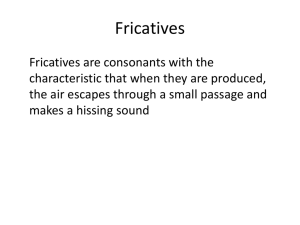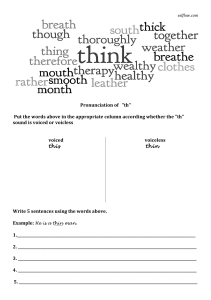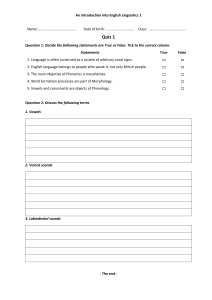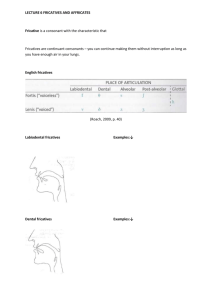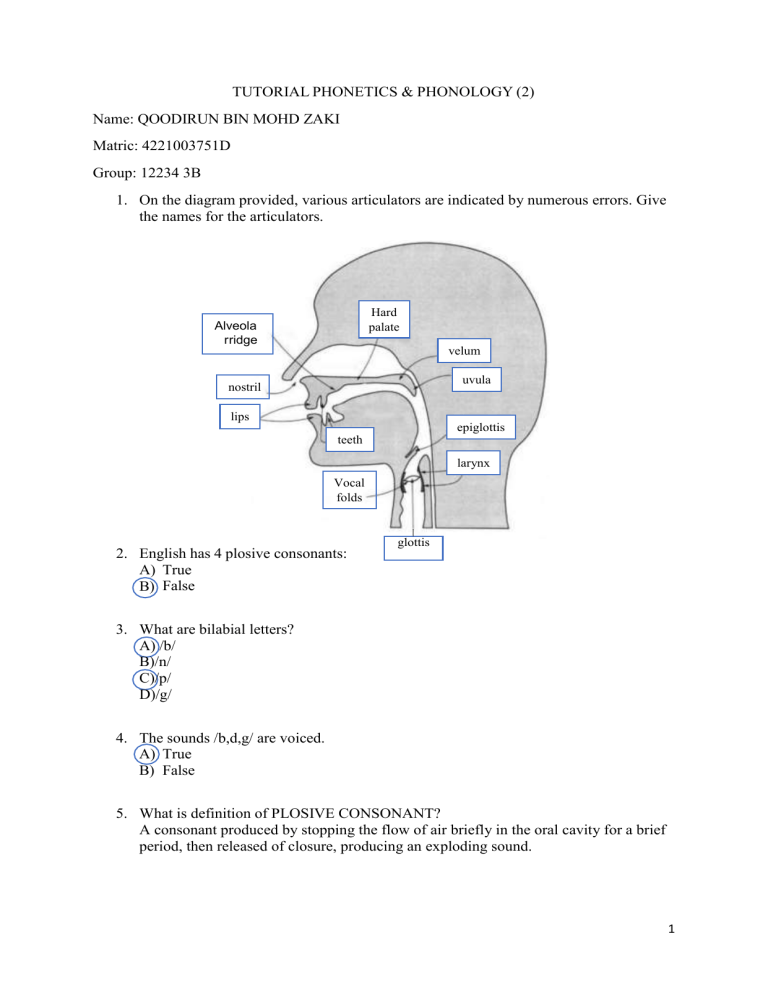
TUTORIAL PHONETICS & PHONOLOGY (2) Name: QOODIRUN BIN MOHD ZAKI Matric: 4221003751D Group: 12234 3B 1. On the diagram provided, various articulators are indicated by numerous errors. Give the names for the articulators. Hard palate Alveola r ridge velum uvula nostril lips epiglottis teeth larynx Vocal folds 2. English has 4 plosive consonants: A) True B) False glottis 3. What are bilabial letters? A) /b/ B)/n/ C)/p/ D)/g/ 4. The sounds /b,d,g/ are voiced. A) True B) False 5. What is definition of PLOSIVE CONSONANT? A consonant produced by stopping the flow of air briefly in the oral cavity for a brief period, then released of closure, producing an exploding sound. 1 6. Explain fortis and lenis and give suitable example. The fortis fricatives are being articulated with greater force than the lenis, and their friction noise is louder. The lenis fricatives have very little or no voicing in initial and final positions, but may be voiced when they occur between voiced sounds. The fortis fricatives have the effect of shortening a preceding vowel, as do fortis plosives. For example, in a pair of words like 'ice' and 'eyes' (ais, alz), the al diphthong in the first word is considerably shorter than in the second. 7. How are voiced and voiceless sounds produced? Explain. Voiced sounds are those that make our vocal cords that located in the throat vibrate when they are produced. However, voiceless sounds are produced from air passing through the mouth at different points without producing vibration in the throat. 8. State whether the underlined sounds are oral or nasal: a. chair: oral b. king: oral c. sing: nasal 9. What is the basic characteristic of nasal consonant? The basic characteristic of a nasal consonant is that the air escapes through the nose and does not through the mouth, and the soft palate must be lowered. 2

